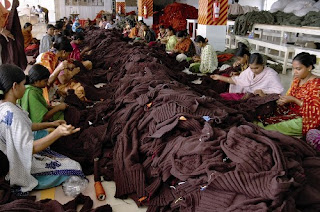Is Privatization good for Bangladesh?
Privatization
has been advocated in the development literatures as the gateway of the growth
and development of the countries all around the globe. Some could achieve the
desired goals and some failed enormously. The reasons of their failure include
structural constraints, inappropriate policy guidelines, imposed instruction
and ineffective implementation strategies. However, the World Bank and the IMF
have been gearing up the campaign of privatization for less developed countries
(LDCs) to stimulate their growth and development.
After
liberation in 1971, Bangladesh
inherited an economy dominated by private sectors. The new government, led by
Sheikh Mujibur Rahman was committed to socialism and nationalized the heavy
industries that were previously run privately. It also faced an industrial
ownership vacuum as fleeing West Pakistanis abandoned their industrial and
commercial companies.
Unpredictable
and poorly administered government policies also create problems. High taxes,
frequently changing tax rates, arbitrary interpretations of tax rules and other
harassment by tax authorities usually raise the cost of doing business and
discourage restructuring. The lack of legal and economic information, including
market studies and company diagnostics could also be a problem. It has been
found that in spite of making promises, no regime in Bangladesh has come out with a
clearly stated privatization policy which would both spell out its underlying
logic and provide a coherent set of guidelines to define its direction.
There are a number of potential sectors
for privatization in Bangladesh
some of which are mentioned below:
Power Sector
Natural Gas and Oil Exploration
Tele Communication
Transport Sector
Port and Container Handing
Aviation and Tourism
Banking and Insurance and so on.

